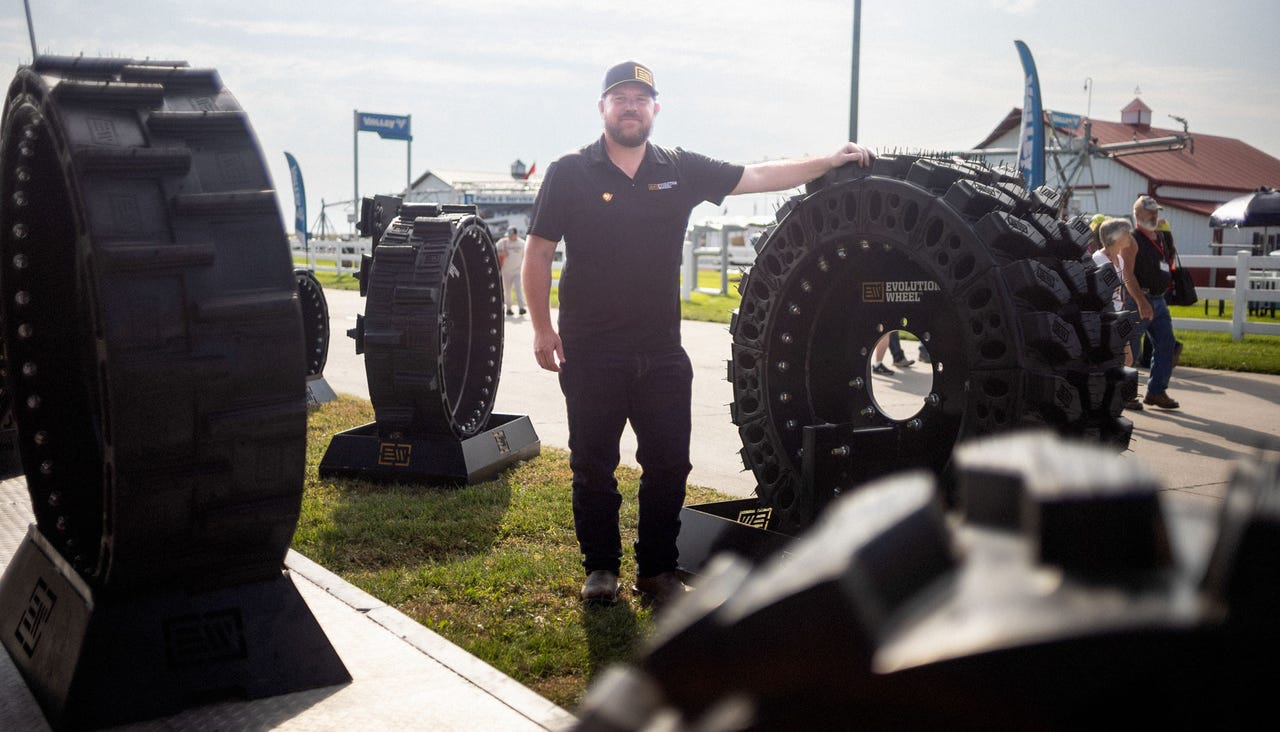Selecting the right pivot tire begins where the rubber meets the turn row. Soil attributes should dictate the decision.
“First things first, consider the terrain of the field,” says Mike Cougar, representing Tredz Central Tire Pros of Courtland, Neb. “What kind of soil type do you have? Is it flat, or is it hilly? Those are going to be your main factors. If it’s rocky, we have tires for that. If it’s clay or loam, we have tires for that.”
He says 11.2-38 bias tires, which have fabric cord laid diagonally in a crisscross pattern from one side of the tire to the other, are always popular. They’re more affordable than other types. But while bias tires are still popular, radial tires might be the best option for many.
Jon Zoucha, president of Nebraska-based Perfect Circle Irrigation, calls them a “one size fits all” solution for many — but not all — operations.
“You can run a radial tire at less pressure. It runs flatter. It doesn’t push the mud out and create a deep track,” he says.

Radial tires have historically cost a lot more than bias tires. However, Dave Thom, president of family-owned and operated T-L Irrigation Co., says prices have become competitive. Further, farmers can now purchase radial tires made specifically for pivots rather than repurposing tractor tires.
“We’ve been testing tires and tracks and wheels — everything that’s available for pivots — for years. And the radial tire is the biggest breakthrough I’ve seen in a long time. Your wheel track will be about half as deep as it would be with a bias ply tire,” Thom says, highlighting their reduced air pressure requirements. “If you can drop 2 pounds [of air pressure], you’re going to have less wheel trash.”
Under less air pressure, radial tires generally last longer than their counterparts and can reduce soil compassion. Besides the soil type itself, Zoucha highlights the impact of water saturation as an important driver of tire selection.
Zoucha says the amount of water put on a field and any underlying water conditions can impact the soil. More water application creates softer, more saturated conditions, which increases the risk of rutting and soil compaction. Radial tires are especially good in these instances because they distribute pressure evenly and float across the ground. He says the extra cost is “definitely worth it.”
Rocky ground
Consider airless tires for aggressively rocky conditions. Cougar says they’re substantially more than other types but eliminate puncture risk and last for a long time, which could provide long-term savings.

“They’re about three times the cost of a normal tire. There are some benefits, but you have to have the right terrain,” he says. Airless tires are also heavy, which limits them to specific uses. But in those cases, they might be the best option.
“It’s a set-it-and-forget-it-type deal,” says Justin Crawford of Evolution Wheel, which specializes in airless tire technology for agricultural and construction equipment. “Nobody likes going out and changing a tire when it’s 100 degrees and 100% humidity.”
When they do break, Evolution Wheel’s modular tire design streamlines repair work.
Sun damage is another consideration. Pivots don’t return to the shed. They’re exposed to elements all day without a break. A pivot tire’s longevity often depends on its ability to withstand sun exposure. Most modern rubber contains ultraviolent retardants and sun resistance.
“We’ve been testing tires and tracks and wheels — everything that’s available for pivots — for years. And the radial tire is the biggest breakthrough I’ve seen in a long time. Your wheel track will be about half as deep as it would be with a bias ply tire.” — Dave Thom
Selecting the right tire
Size matters when selecting a new pivot tire. So does tread type. Directional treads require separate left and right tires, and need specific reverse and forward configurations. Nondirectional treads are interchangeable, which means farmers don’t have to stock as many.
“You only have to have one extra tire versus having specific left and a right [treads],” Crawford says.
When it comes to sizing, Cougar often recommends slimmer treads.
“A lot of farmers are going to tall, narrow tires. Because you don’t have as wide a track, you’re not bouncing your combine,” he explains.

They’re also typically taller, which helps when corn grows tall, and have more surface area because of their larger size. This can reduce spinning. Further, they can get around the field faster. But there is a trade-off. Given their narrower profile, taller tires might create ruts in soft ground.
“A taller tire can run at a quicker watering speed, so they get around the field quicker. But at the same time, if it’s a taller tire, it’s generally skinnier, so you’re going to be cutting a deeper trench,” Crawford says.
Other factors that should be taken into account include crop type, hills and whether or not fertigation is happening. At the end of the day, Crawford says farmers should select the right tire size for their specific center-pivot irrigation systems. There’s no hard and fast solution for every operation.
“No one solution is going to be the same for every field,” he adds.